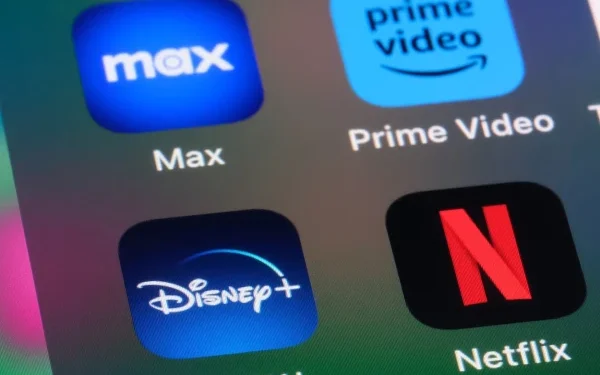Introduction: A Widespread Cybersecurity Breach Shakes the Streaming Industry
In a disturbing revelation for online privacy and digital security, a recent cybersecurity report by Kaspersky has exposed a massive data breach involving more than 7 million user accounts from popular streaming platforms such as Netflix, Disney+, Amazon Prime Video, Apple TV+, and Mac-related services. The breach, which occurred as part of a large-scale cybercriminal campaign, highlights the growing vulnerabilities associated with unauthenticated apps, browser extensions, and third-party software downloads.
As streaming services become increasingly popular across the globe, they have also become prime targets for cybercriminals seeking to harvest and sell user credentials on underground forums. This breach underscores the urgent need for better cyber hygiene, enhanced security protocols, and increased public awareness about the dangers of downloading unverified content.
Details of the Breach: Over 7 Million Streaming Accounts Compromised
According to the comprehensive findings published by Kaspersky, the account credentials of over 7 million users were stolen throughout 2024. The stolen data includes login information for some of the world’s most widely used streaming platforms:
- Netflix
- Disney+
- Amazon Prime Video
- Apple TV+
- Mac-specific applications and services
This breach is one of the largest of its kind in recent years, especially in the context of the entertainment industry, where millions of users store sensitive payment information, passwords, and personal viewing histories on their accounts.
How the Hack Happened: Malware-Infested Downloads and Third-Party Tools
Kaspersky’s Investigative Findings
Kaspersky’s team of cybersecurity researchers traced the attack to malicious software embedded within unauthorized browser extensions and pirated applications. According to Polina Tretyak, a digital footprint analyst at Kaspersky, the breach was executed by malware that operates silently in the background after being downloaded through third-party platforms or unverified sources.
“Malware hidden in unofficial software or browser tools discreetly gathers login credentials and personal data. Once stolen, this data is then sold on dark web forums, often for just a few dollars per account,” said Tretyak.
Such malware typically:
- Infects devices without triggering antivirus alarms
- Logs keystrokes to capture usernames and passwords
- Exfiltrates saved login sessions from browsers
- Targets cookies and authentication tokens
The Rise of Streaming Account Theft: A Lucrative Black Market
Why Streaming Accounts Are a Target
Stolen streaming service credentials are highly valuable on cybercriminal marketplaces. While the sale price for an individual account may be low—sometimes as little as $1–$3—the sheer volume of available accounts makes it a profitable business for hackers.
Buyers on the dark web often use stolen accounts for:
- Free access to premium content
- Credential stuffing attacks on other platforms (where reused passwords are exploited)
- Account reselling on gray markets
- Establishing digital footprints to commit further fraud
In some cases, victims are unaware that their accounts are compromised because hackers avoid changing passwords, allowing them to covertly access services for months.
User Behavior and Weak Cyber Hygiene: A Contributing Factor
The Danger of Unverified Software
Many users unintentionally compromise their own security by downloading:
- Free “enhancer” tools for streaming apps
- “Modded” versions of mobile apps
- Browser extensions promising ad-blocking or download capabilities
These tools, often promoted on forums or shady websites, bypass official app stores and rarely undergo any form of security auditing. Once installed, they can inject malicious code, track activity, and harvest stored credentials.
Password Reuse and Lack of Two-Factor Authentication
Kaspersky’s report also highlights a troubling trend: many users reuse the same email-password combination across multiple platforms. This makes them vulnerable to credential stuffing attacks, where one set of stolen login details is tested across numerous services. Furthermore, most users do not enable two-factor authentication (2FA), making it easier for hackers to gain access undetected.
The Broader Impact on the Streaming Industry
Reputational and Financial Consequences
While the platforms affected—Netflix, Disney+, and others—were not directly hacked, their brands suffer collateral damage from these breaches. Users often blame the service for security lapses, even when the breach originates from user-side vulnerabilities.
Additionally, streaming services may face:
- Increased customer service costs due to password resets and account recoveries
- Loss of trust among subscribers
- Content usage anomalies, such as unauthorized streams that impact licensing agreements
What Users Can Do: Preventing Future Data Breaches
To protect against such threats, cybersecurity experts recommend the following preventive measures:
1. Avoid Downloading Unverified Software
Only download apps and browser extensions from official sources like the Apple App Store, Google Play Store, or official websites.
2. Use Strong, Unique Passwords
Avoid using the same password across different platforms. Use a password manager to generate and store strong, unique credentials for each service.
3. Enable Two-Factor Authentication (2FA)
Wherever possible, enable 2FA, which requires a second layer of verification beyond just a password.
4. Regularly Monitor Account Activity
Keep an eye on login activity and sign out of unfamiliar devices. Most streaming platforms offer a dashboard showing active sessions.
5. Install Antivirus and Anti-Malware Tools
Use a reputable antivirus program that can scan for and remove malware. Also, regularly update your operating system and software to patch known vulnerabilities.
How Streaming Platforms Are Responding
Streaming platforms are actively working to minimize damage and protect their users. Some of the measures already in place include:
- AI-powered fraud detection systems
- Email alerts for unfamiliar logins
- Password reset prompts when suspicious behavior is detected
- Improved backend security protocols
However, companies often emphasize that users play a critical role in maintaining their own account security.
Law Enforcement and Global Cybersecurity Response
The international cybersecurity community, including law enforcement agencies like Interpol and Europol, is increasingly focused on curbing the global trade in stolen digital credentials. Efforts include:
- Monitoring dark web forums
- Taking down marketplaces selling stolen accounts
- Collaborating with tech companies to trace malware origins
Conclusion: A Wake-Up Call for Digital Consumers
The recent data breach affecting over 7 million accounts from Netflix and other major streaming services serves as a stark reminder that online security is a shared responsibility. As cyber threats continue to evolve, users must stay vigilant, adopt better digital practices, and recognize the risks posed by unauthorized software and poor password management.
Streaming services will continue to upgrade their defenses, but unless users also take proactive steps, vulnerabilities will remain. Cybercriminals exploit the weakest link in the chain—often, that’s the end user.

























